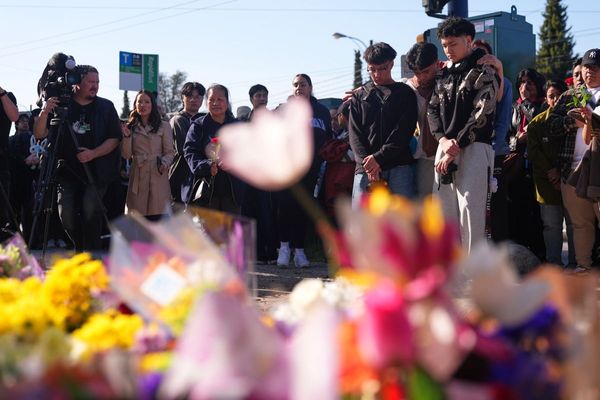
A shadowy group called The Resistance Force, described by Indian security officials as a proxy of the Pakistan-based Lashkar-e-Toiba, has purportedly claimed responsibility for the Pahalgam attack. TRF had earlier claimed the ambush on a private bus carrying civilians in Jammu’s Reasi area last June. Following the Reasi attack, a purported message from the group described it as the “beginning of a renewed start,” warning of more attacks on “tourists and non-locals”.
The TRF claim following the Baisaran Valley attack cited the issuance of 85,000 Jammu and Kashmir domicile certificates to non-locals as “creating a pathway for demographic change” in the Union Territory. Previous TRF-attributed attacks have drawn attention due to the near commando-level training of those who carried out the attacks – their shooting skills, use of sophisticated communication apps that evaded surveillance, and ability to survive for extended periods in hideouts in the upper reaches of the Pir Panjal range.
The Baisaran massacre brings several critical aspects into sharp focus.
Identity of perpetrators
Based on survivor accounts, investigators believe that two of the five or six militants who carried out the horrific killings may have been Kashmiri men, Newslaundry has learnt. The others were “foreign terrorists”, the term used by security forces for terrorists from Pakistan. The area, to which there was no road access, appears to have been chosen after much planning, and carried out by well-trained men who were armed with Ak 47 and the US-manufactured M4s.
The attack comes days after a speech by the Pakistan Army chief Asim Munir that Kashmir remains Pakistan's “jugular vein”, a description of Kashmir’s importance to Pakistan first articulated by the country’s founder Mohammed Ali Jinnah. Pakistan would not forget this, General Munir said, also harking back to the “two-nation” theory, and telling his audience, which included Prime Minister Shehbaz Sharif that Muslims were a “superior” people and “different” from Hindus in every aspect of life.
“Our religions, our customs, traditions, thoughts and ambitions are different. That was the foundation of the two-nation theory that was laid,” he said in a speech that many in Pakistan, where he is as unpopular as the incarcerated Imran Khan is popular, saw as a bid by Munir to renew the Pakistan Army’s claim to being the “guardians of Pakistan's ideological frontiers”, and shore up his own fallen image.
This speech may or may not have triggered Baisaran, but the attackers hewed closely to Munir's script.
Timing
If last year’s big attack in Jammu was timed for Modi’s swearing-in, Baisaran was clearly timed for US President J D Vance’s India visit. The dates of Vance’s visit were known ahead.
This is not the first time that a terror attack in J&K has been timed with the visit of a US dignitary. The Chittisinghpora massacre, in which 35 people were killed, took place on March 20, 2000, on the eve of President Bill Clinton’s visit to India.
Such timing serves the purpose of grabbing world attention and conveys that contrary to the Indian government’s narrative of normalcy in Kashmir after the 2019 constitutional changes, it remains volatile and violent. Only last month, Union Home Minister Amit Shah told Parliament that terrorist incidents had come down, that Kashmir was a much safer place now than in the UPA years, and that tourists were flocking to it in vast numbers. It also serves the purpose of putting out false flag theories.
In terms of the number of people killed in a singular attack, the Baisaran massacre is next only to the Chittisinghpora massacre, and bigger than the mass killings of 24 Pandits at Nadimarg village in Pulwama in 2003. But what it comes closest to is recreating the national outrage that followed the Pulwama bombing in which 40 CRPF personnel perished, or the shock value of Mumbai 2008.
The other element in the timing was that the attack took place on the same day as Modi’s visit to Saudi Arabia, where he flew hours after meeting Vance and his family. Modi had visited the kingdom twice before, in 2016 and 2019. On this visit, which took place in the midst of a global trade crisis triggered by US President Donald Trump, on Modi’s agenda was a discussion with the Saudi de facto ruler Crown Prince Mohammed bin Salman on reviving the India-Middle East Economic Corridor connecting the Indian subcontinent with Europe via the Middle East. This massive project was touted as the next big thing at the G20 summit in Delhi, but sank under the Israel-Hamas war.
Modi cancelled his Saudi trip within hours of landing there, and arrived back in Delhi on April 23. If the terrorists wanted to convey a message to “MbS” – he had discouraged Pakistan's internationalisation of the Kashmir issue and its use of the Organisation of Islamic Conference to do this – they succeeded. The Crown Prince and Modi discussed the terror attack and, according to reports, offered Saudi assistance, though for what was left unsaid.
A third point to consider about the timing is that it came 40 days after an attack by Baloch militants on a train in Balochistan. The attack on the Jaffar Express was claimed by the separatist Baloch Liberation Army when it was on its way from Quetta to Peshawar. The militants fired at the train and captured it, taking about 100 passengers on it hostage. The train and passengers were freed 48 hours later in a security operation in which 16 militants were also killed. Pakistan’s military and government blamed India for the attack.
Prime Minister Modi was expected to travel to Jammu to inaugurate the first direct Katra-Kashmir train on April 19, but that event was postponed, reportedly due to an adverse weather forecast.
Location
Over the last three years, there have been more strikes in Jammu, mainly in the two border districts of Poonch and Rajouri, than in Kashmir. The reason for this was the sustained security crackdown on militancy in the Valley.
The tight security lid clamped on the Valley after the August 5, 2019 reading down of Article 370 saw a steady dwindling of local recruits into ranks of militant organisations. Attacks did not end, but the perpetrators picked isolated soft targets such as migrants and Kashmiri Pandits. Last year, during the Lok Sabha elections, a couple from Jaipur were injured when they were fired at by gunmen, the first attack on tourists in the Valley after the 2017 attack on a bus carrying Amarnath pilgrims.
While encounters continued in Kashmir, in which both militants and security forces personnel were killed, Jammu region’s twin border districts of Poonch and Rajouri in the Pir Panjal range turned into the new ground zero of ambushes by terrorists on the military. Top military officials also spoke of infiltration in that area by a large number of cross-border terrorists. The attack on the pilgrim bus in June 2024 in which nine people died, and an earlier attack on a village of Hindu residents in Rajouri, were two big attacks on civilians in Jammu.
Late last year, a small detachment of the National Security Guard’s counter-terrorism unit was stationed in Jammu for additional security in the region.
Perhaps presaging the Baisaran attack, an uptick in attacks in Kashmir Valley was seen immediately after the J&K assembly election won by the National Conference-Congress combine. Two days after Omar Abdullah’s October 16 swearing-in, a migrant worker from Bihar was shot dead by unidentified gunmen in Shopian.
On October 20, TRF claimed the attack on a tunnel construction site at Gund in Gagangir area in Sonamarg region in Ganderbal District. The attack killed a doctor and six labourers, both locals and migrants. More incidents followed through October. A migrant worker was injured in an attack in Tral. Two soldiers and two civilian porters working for the Army were killed in an ambush near the Line of Control in Baramulla, claimed by another shadowy group called “People’s Anti-Fascist Front”, a Jaish-e-Mohammed proxy according to officials. In January, a soldier was killed during an encounter with terrorists in Sopore.
The surge in attacks indicated to security officials that a large group of “foreign terrorists” had crossed over to the Valley from the Jammu side before snow closed down the high mountain passes in the Pir Panjal range. But they were more numerous and harder to track down than local militants. On April 12, just 10 days before Baisaran’s Black Tuesday, in two separate incidents, three terrorists were gunned down, and a soldier was killed in Jammu’s Kishtwar region, in the Chenab valley, just south of Pahalgam.
Ominous intention
The move to Kashmir also indicates a shift with ominous motives. The Jammu attacks on military vehicles and local Hindu families were all serious incidents showing gaps in intelligence, a casualness about security in the military, and the inability to prevent infiltration. But perhaps, they did not give the terrorists what they needed – an attack so sensational that it would shock the entire country, and stir up India’s simmering communal pot with it.
Kashmir has a higher national and international profile. Zeroing down on the picturesque Baisaran in Pahalgam, which thousands of tourists from all parts of the country, and foreigners too, visit daily, ensured an attack that would make a lasting impact on the entire nation, unlike in Jammu, where the attacks and their victims were forgotten after a few days. And at Baisaran, the attackers were reportedly clearer in messaging that they were out to target Hindus.
As narrated by a survivor of the attack on Republic TV, the gunmen asked victims to recite the Kalma, the Muslim article of faith, and shot them dead if they could not. A report in The Indian Express said victims were asked their names. This execution-style killings of predominantly Hindu tourists, mostly men (women and children were let go, according to reports), from all over India, after telling them they would be spared only if they could recite the Islamic confession, seems to have been a premeditated plan to sharpen the existing Hindu-Muslim divide in the country.
Options before Modi
The attack and the shockwaves it has sent throughout the nation is certain to put enormous pressure on the Modi government to punish Pakistan, even though its role has not been proved by hard evidence, but is assumed circumstantially. Social media is demanding that India “break up” Pakistan in retaliation. Social media warriors are reminding Doval of his words that if another Mumbai takes place, there wouldn’t be a Balochistan left in Pakistan.
Government insiders say nervously that “there will be a response”though no one knows what that will be. India is now in a “response trap” of its own making, having already carried out kinetic action against Pakistan on two previous occasions when terrorists struck big in Kashmir.
In September 2016, when India carried out a “surgical strike” in response to the Jaish-e-Mohammed attack on the Uri Brigade headquarters, Prime Minister Modi and others in the government proclaimed that Pakistan had been taught a lesson to never even think it could use jihadi terror against India and get away with it. However, the attacks in Kashmir did not end. The following years saw a surge in the recruitment of young Kashmiris into the ranks of militant groups.
In February 2019, the Indian Air Force attacked a hill in Balakot in Pakistan's Khyber Pakhtunkhwa where a Jaish-e-Mohammed madrassa was the target, to punish Pakistan for Pulwama. This too failed to end attacks in Kashmir, despite the serious message from India that it was not diffident about pushing the nuclear threshold.
The flag-bearers of Hindutva like to think of a Hindu India as another Israel that can inflict unbearable pain on its enemies. They would expect India to take a cue from Israel’s actions after the October 7, 2023 Hamas attack.
India has certainly gathered condemnations of the attack and sympathy for Indians from across the world and all the major powers with the same swiftness as Israel in the aftermath of the Hamas attack. It would be quite another thing for the world to support an Indian plan for a military retaliation, because in fact, India is not Israel and Pakistan is not Gaza.
If you liked this piece, let our reporters tell you why you should subscribe to Newslaundry.
Newslaundry is a reader-supported, ad-free, independent news outlet based out of New Delhi. Support their journalism, here.







